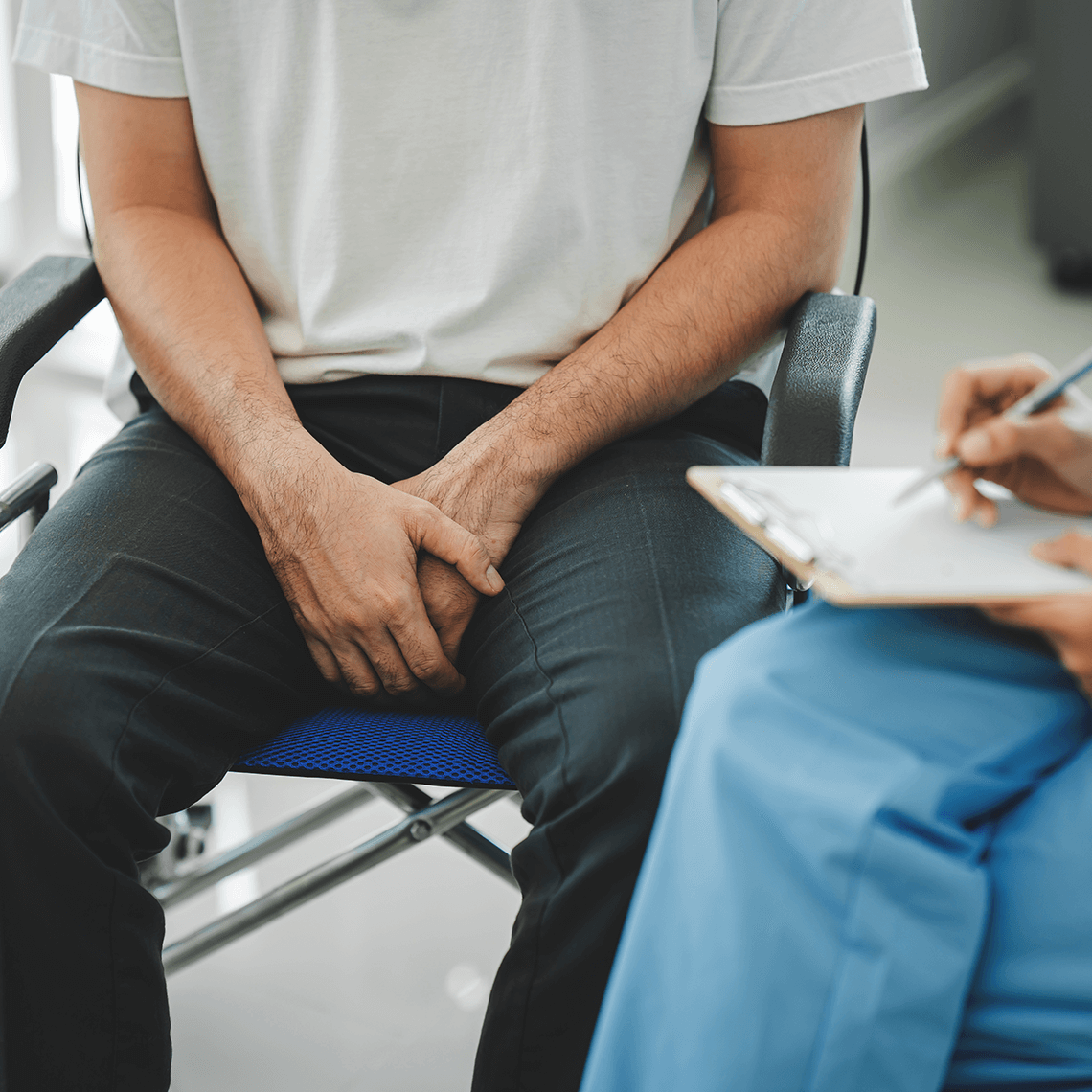Podcast
When the Patient’s Home is the Hospital
Mar 13, 2023

“The future of health care is in the home ”
Heather O'Sullivan, MS, AGNP
President, Home-Based Care for Mass General Brigham
[Narrator]
At a recent gathering of malpractice defense attorneys in Boston, a senior leader from Mass General Brigham described a growing phenomenon in care delivery: Home Hospital. The idea is to treat highly screened patients in their homes after being admitted, rather than at the hospital. For certain patients it will be better than an in-patient stay, and the hospital can use in-patient beds for more acute cases. The lawyers heard about the challenges and risks of scaling up a Home Hospital program, from Heather O’Sullivan. O’Sullivan is an Adult-Gerontology Nurse Practitioner, and President of Home-Based Care for Mass General Brigham.
[Heather O’Sullivan]
So wonderful to be here with all of you. My goal, as I was sharing a little bit earlier with one of your colleagues, is that when you leave today that you understand what home-based care is and what Home Hospital is, especially as Mass General Brigham is currently executing the largest Home Hospital in the country. That’s a little tongue in cheek, because that being said, we’re only at double digits, but it’s still quite a significant undertaking.
So why now? It is a hot topic. I don’t know how often this has come across your desk or your LinkedIn. It's no longer home care, which is the traditional VNA as we all know it. This home “hyphen” based care is the hot buzz word, and I think it will, not I think, I know it will become part of your practice in the future. Primary care, virtual primary care: think about COVID. How many of us really appreciated having that opportunity for the telehealth visit either for our families, our loved ones, ourselves. That was really sort of the first bubbling up of it all. At Mass General Brigham, we also have virtual observation. You’re all familiar with obs status. We can now do that, actually, in the home. And what I’ll be predominantly speaking to you today about is Home Hospital, and also post-acute care in the home.
Home-based care is across a continuum. It is not intended to be a replacement for any type of in-patient services. It is available to individuals that can successfully continue a course of medical care in a non-acute setting in their home. And so it’s really a hybrid opportunity for patients that meet criteria.
We run at Mass General Brigham oftentimes well over 100% capacity in the emergency room. It is still a significant problem. And how are we going to relieve that is actually by identifying diseases, conditions in patients, that can be successfully treated in a non-acute setting, opening up space and capacity for those patients that require that bricks-and-mortar. Technology advancements. We have the tech to enable the care that we want to provide in non-bricks-and-mortar settings. And then a favorable regulatory environment.
And then changing competitive landscape that I just mentioned. It is a hot topic. The phone is ringing off the hook to anyone that has background knowledge or expertise in the home from private equity, VC, you name it. Although it’s very exciting, it’s, I won’t say dangerous, but it's a little risky with everyone just trying to run in and grab what the opportunity could be. We just really have to keep top-line focus on outcomes.
And what I want to draw your attention to is the bottom of the slide—these foundational capabilities—remote patient monitoring. We’ve got home-based diagnostics; we can take your blood and have your CBC results in seven minutes; home-based therapeutics; your IVs; mobile-integrated health ( MIH, as it’s referred to) which really launched heavily during COVID; virtual care. And then this is the tough one, the real-time logistics orchestration, which is, quote unquote, the last mile service delivery.
MRP: we have—they’re not Subarus, but they remind me of Subarus.... We have mini ambulances that are driving around Massachusetts today that are fully stocked with paramedics, and all of the supplies they need, that are doing visits in the home. And that was a continuation from what was kicked off with COVID. And then virtual observation, I already sort of touched on that. Why would we stay in an obs unit in an obs bed in the hospital if we could do that at home and still have that diligent oversight?
Moving into Home Hospital: with Home Hospital, we identify those patients through rigorous screening, payer agnostic, a very clear cohort of diagnoses that we have a high degree of confidence in managing in the home. We offer Home Hospital to those patients. They’re fully consented. And then by doing that, shifting that whole group of patients to the home, we open up more capacity. This is a way of, again, serving our community in a more significant way, making sure that we have access to those beds when patients really need to be in the acute setting, and then also, it helps us avoid capital expenses with building new hospitals, because I don’t know, I don’t have a crystal ball, but there’s been no relief in sight for individuals requiring the level of care that we’re able to provide.
So, what are the benefits? Patients love it; families love it. And the results prove that we have lower complications, lower mortality, reduced emergency department utilization, lower readmits and lower length of stay. That’s pretty amazing to be able to say all of those things.
For clinicians, it is very meaningful. Our clinicians are burnt out, paramedics, docs, nurses, you name it. They’ve had it. They’re exhausted. And for some clinicians, at a given point in their career, this feels amazing. They have the time to sit with the patient, to sit with the family, to not feel as rushed and harried, because there could be somebody else that needs their attention. I can’t tell you what a win it is for our clinicians. And then for the system, like I mentioned, shifting patients to the lower cost of care, we’re able to reduce total cost of care, I think by about 38 percent. I have a slide on that coming up.
I think what’s really exciting about this slide is the single-digit readmit rate. I hope we can keep it that way. But compared to 23% for inpatient, that’s massive. We’ve also noticed fewer lab orders, fewer imaging studies, fewer consultations. And I’ll share with you the length of stay, interestingly, is about the same for a Home Hospital patient, as it would be for an inpatient, around that 5, 5.7 length of stay. One little bullet there: smaller proportion of the day spent lying down. If you can just think of — if you’re getting cared for at home for pneumonia or cellulitis, versus if you were getting cared for in the hospital, and most of us would be stuck in that hospital bed and take an occasional trip to the restroom and then back in. At home you’ve got to get up, you’ve got to make your tea, you’ve got to let your dog in or out if you can.
All that being said, we’re at a 26-bed capacity today. Twenty-six-bed capacity, we run an average daily census of about 19 or so, so that means 19 active patients that would quality for inpatient stay in this geography. Typical diagnoses: COPD, CHF, sepsis, those are the biggies.
I am often asked about equity, and you probably already read it by now, but 70% of our patients are over the age of 65, and that is older than our typical general inpatient hospitalized individual, which is 52. And then compared to general inpatient population, our Home Hospital patients are more racially diverse. And we are spending a lot of time and thought and effort in analysis and to making sure that we get this right going forward. So, I’m just very fortunate to have a big team doing a lot more work on eligibility criteria.
Mass General Brigham, like I said, is steadfast in building out this opportunity; because it is critical in serving our community that we open up capacity, that we relieve the burden and the stress on our clinicians, and we will proceed ahead regardless of the federal reimbursement. What that looks like, our relationships with payers, how we have to work very collaboratively with the state around our intent, et cetera, we will figure that out.
As far as compliance, we have very strict clinical and social eligibility criteria, and we do have a COP with CMS for this care model, and obviously we adhere to those requirements. Another risk, lack of 24/7 onsite premise. Typically, you’ve got the nurse 17 steps away at the nurse’s station, you've got the resident four floors down: that is not there in the middle of the night when somebody might have shortness of breath, et cetera. However, like I mentioned, we have 24/7 tech-enabled monitoring, on-demand telehealth. We’ve got escalation protocols. There's always 911. And again, which is why we are being very careful about the expansion and the geography that we serve, because we have to make sure. We can’t have a single miss on any of this.
Adverse events and liability: Obviously, quality and safety, tremendously supported by both AMCs in having all of the pathways and support and doing what we need to do to set up this correctly. That being said, we are figuring this out every single day.
Again, Mass General Brigham is just absolutely steadfast in ensuring that the care that we deliver outside of the four walls is the same that will be provided in other settings, that world-class care, academic medical center. Really, Mass General Brigham views that the future of health care is in the home and MGB will be leading that future and I am very privileged to be a part of all of that. Ensuring that we care for the patient at the right time, the right place, and the right care. You’ve heard a lot of that, but now it's actually happening. The right place could be at home or alternative settings for individuals.
All right. Thank you very much.
Commentators
- Heather O'Sullivan, MS, AGNP
About the Series
We’ve got you.
Our Safety Net podcast features clinical and patient safety leaders from Harvard and around the world, bringing you the knowledge you need for safer patient care.
Episodes
$1.5 Billion in Miscommunication: Medmal Data Report Finds Opportunities
Case Dismissed! Every Medical Defendant’s Dream Still Holds Some Nightmares

Expert: Communication Is Top Fix for Prostate Care Allegations

How Depositions Make or Break a Medmal Defense


